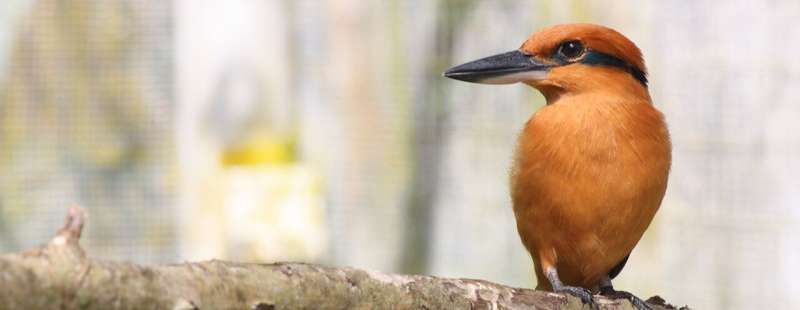This article has been reviewed according to Science X's editorial process and policies. Editors have highlighted the following attributes while ensuring the content's credibility:
fact-checked
proofread
Research illuminates path to Guam kingfisher revival

A recently published paper in Animal Conservation provides crucial insights into the health of sihek, also known as the Guam kingfisher, a species eradicated from its native habitat and that may now face threats in captivity. The latest data underscores a stark gender disparity, revealing that female sihek are at greater risk for death and disease than their male counterparts.
As part of an ongoing study, researchers at The Zoological Society of London are investigating the health of sihek. Their work encompasses a range of issues including hatching failure, female health, mortality rates and genetic threats impacting the bird.
"The sihek is a species on the very brink of being lost forever—and it is only due to the care and expertise of conservation zoos that these birds still exist, giving us a chance to return them to the wild," said Dr. Amanda Trask, the study's principal investigator. "Conservationists, zookeepers and scientists working to restore a wild population. They are working at the cutting edge of conservation, and we must continue to review and build upon existing knowledge of their care to ensure that the species has the best possible chance."
Trask said the research team examined the causes of death in the birds and found differences between males and females. Females succumbed to reproductive diseases—a phenomenon not observed in males. The incidence of reproductive diseases among female sihek was also notably higher than in other avian species.
While it's still unclear why this is occurring, she added that the team's upcoming research will delve into a potential correlation with increased egg production. Other causes of death, such as nutritional and metabolic diseases, were seen in both males and females, but females tended to succumb at younger ages than males.
Trask thanked the Morris Animal Foundation for supporting her work and looks forward to continuing her support of the international initiative involving Zoos from the Association of Zoos and Aquariums, federal and Guam agencies and non-governmental conservation organizations, to return sihek to the wild.
More information: A. E. Trask et al, Balancing conservation and welfare in ex situ management of the extinct in the wild sihek: sex‐ and age‐specific causes of mortality and contributions to population growth rate, Animal Conservation (2023). DOI: 10.1111/acv.12895
Provided by Morris Animal Foundation




















